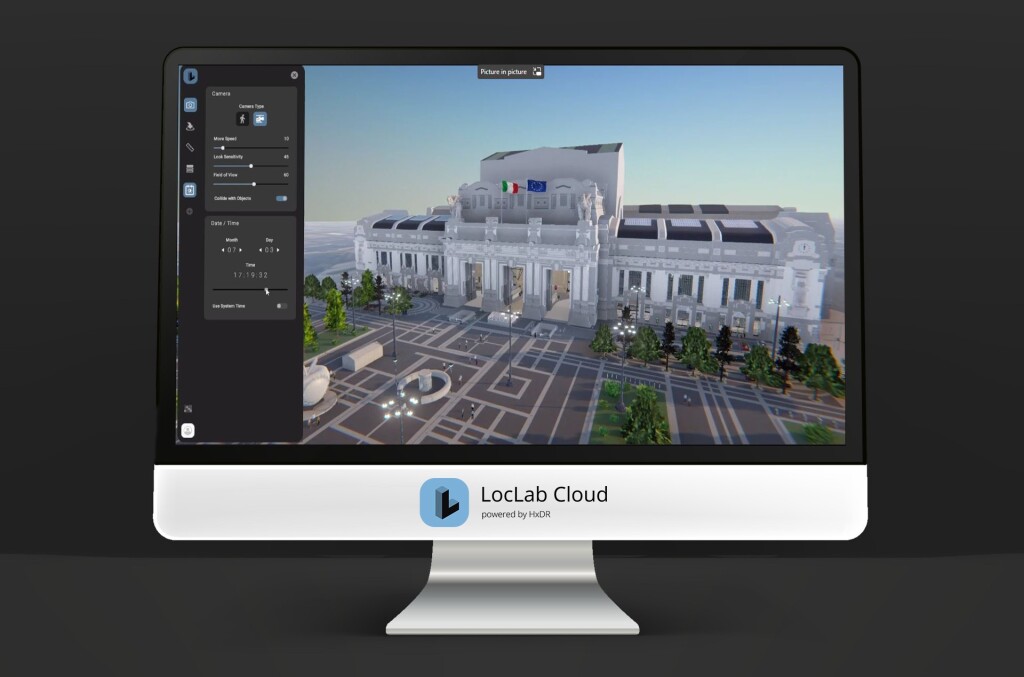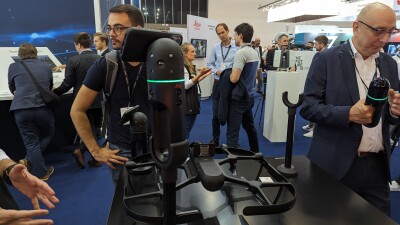Earlier this month, just prior to the start of last week’s Intergeo 2023 conference in Berlin, Germany, Hexagon announced the launch of their new LocLab Cloud product for digital twins, which is powered by the company’s HxDR. The launch comes less than a year after the company originally acquired LocLab, a move which itself came just a couple of months after the two entities entered into a strategic partnership. According to the announcement of the launch, LocLab Cloud will offer “a secure end-to-end solution for 3D digital twins, allowing management and monitoring of models.”
LocLab Cloud is, at its heart, a way to take the usage of digital twins to the next level, allowing for easy sharing and an intuitive interface to facilitate collaboration between a number of stakeholders with different levels of technical expertise. As the name suggests, the platform puts the digital twins onto the cloud and allows users to view the model on any device with which they can access a web browser. LocLab creates 3D models from any sort of data sources, including point clouds, BIM models, and photographs. Users can also integrate in-house systems to the platform to ensure they are still getting the most out of their own data.
As noted above, LocLab Cloud is powered by Hexagon’s HxDR, which was first unveiled early in 2020 and serves as the company’s cloud-native platform for geospatial data. The platform is also the backbone for Hexagon’s Reality Cloud Studio, which was unveiled earlier this year at HxGN Live 2023. With geospatial data providing more value to more industries than ever before, the next step has been developing tools to easily share and digest all of this data. That’s what HxDR aims to do, allowing for collaboration and visualization, storage for all of this data, automated processing, and managing users to utilize said data. LocLab Cloud joins the aforementioned Reality Cloud Studio, as well as HxDR Data Store, as applications powered by the platform.
Looking again specifically at LocLab Cloud, in a way this new product is a signal of the way digital twins are starting to be accepted beyond simply being an exciting buzzword and instead as a tool that can bring real value today. As we’ve talked about before, there are different definitions of what even constitutes a true digital twin, but here we’re talking about a 3D model that also includes integrations of IoT sensors and other real-time information tools.
It’s by adding this real-time information that asset owners and other stakeholders can truly derive the most value out of their models, and LocLab Cloud looks to make that information as accessible as possible. Part of that is simply by being a cloud-based platform, something we’re seeing more of with respect to streaming geospatial data. This makes sense, of course, as more people can and will be willing to access information via a web browser as opposed to needing to download an app, and cloud-based technologies are becoming more sophisticated. Additionally, LocLab Cloud offers capabilities like being able to click single areas and objects of a model to get specific information from that section, switching between present and planned designs, simulation capabilities, and more, all of which help non-technical users still make the most out of the data and embrace the new technology.
"Industry increasingly understands the benefits of data-enriched digital twins. But to fully realize their potential, users need an efficient platform that helps them securely store, manage and maintain these assets, ensuring real-time updates,” says Ilka May, CEO at LocLab, in a press statement. “LocLab Cloud is an innovative SaaS platform that enables clients to access and share data about their assets through a very intuitive spatial 3D environment.”






